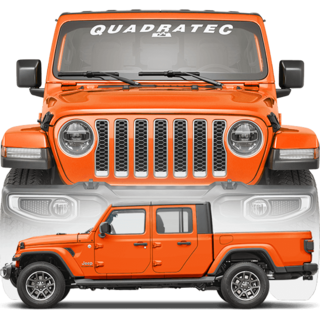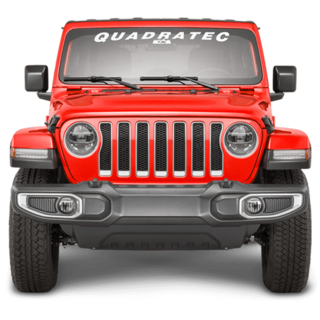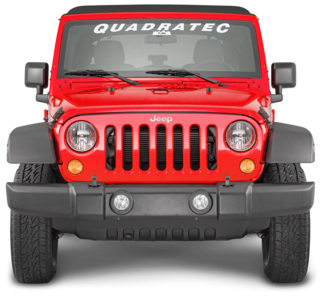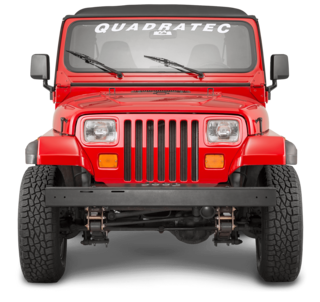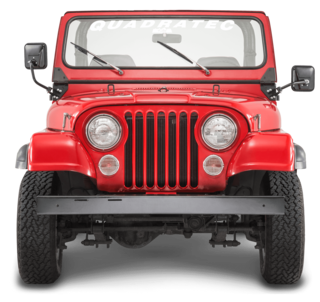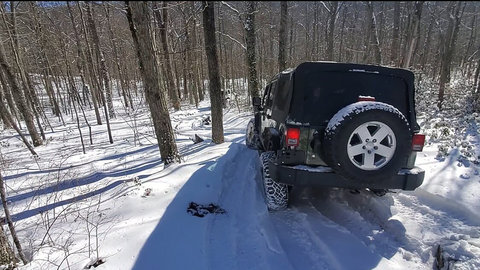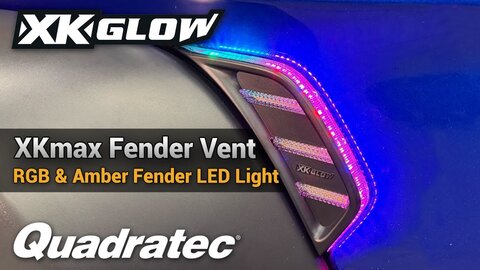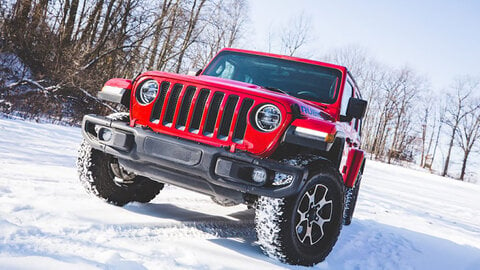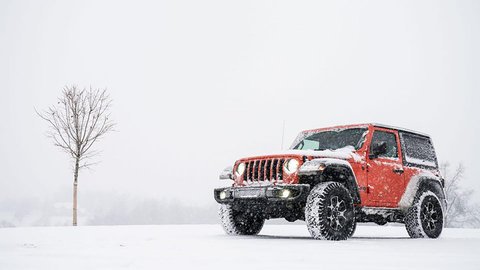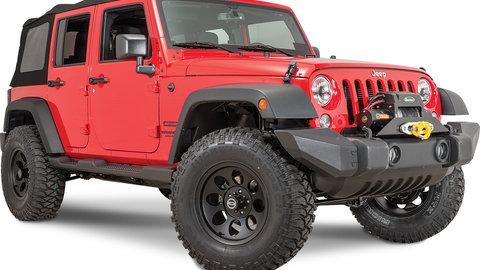by Matt Konkle
Managing Editor
LAS VEGAS—If there’s one topic that keeps showing up around the Las Vegas Convention Center during this year’s Specialty Equipment Market Association show, it isn’t paint, power, or even EVs.
It’s ADAS.
And while that sounds like some kind of robot from a Netflix science fiction movie, it really means Advanced Driver Assistance Systems.
As today’s vehicles get more and more complex, automakers are adding this technology into nearly every one that rolls off the assembly line.
Lane departure warning cameras in the windshield, radar hidden behind grilles, parking sensors tucked into bumpers: today’s trucks and Jeeps roll out with safety tech that’s constantly watching the road.
Those systems are great for reducing crashes, but they also introduce a new problem for the aftermarket: how do you add a lift kit, bumper, winch, or bike rack without confusing the sensors that are supposed to keep you safe?
That’s why SEMA has started treating ADAS as the policy issue of the moment. This year, the organization has been in Washington, D.C., urging the U.S. Department of Transportation and Congress to create clear federal guidelines for how ADAS should be calibrated after common modifications like lifts, wheels and tires, bumpers, racks, or even vinyl wraps. The goal: keep safety systems working properly while still protecting enthusiasts’ right to customize.
This year, as we entered day three of our SEMA experience, we took a detour to the Upper South Hall to investigate the new ADAS Showcase.
With continuous demonstrations, training sessions and educational seminars, the showcase sought to teach shops, drivers and vendors across every automotive medium how to integrate products with these advanced systems, so everything still does its job after a vehicle is modified.
And for Jeep owners, it’s a clear message from SEMA that they will work hard to ensure the future of customization isn’t just about what you bolt on, it’s about how well your vehicle’s sensors keep up.

One: Inside the Chaos of Central Hall — SEMA’s Wildest Arena
If there’s one place at the SEMA Show where adrenaline seemingly replaces oxygen, it’s the LVCC’s Central Hall. A place where crowds surge, cameras flash nonstop and many of the automotive world’s biggest names battle for attention under one roof.
While the West Hall is mainly known for truck and off-road displays, Central Hall seems to be a catchall for just about every genre of vehicle under the racing and performance umbrella.
The moment you step inside, you're hit with a sensory overload, towering LED displays, thundering audio demos, polished concept builds glowing under spotlights and a crush of people all fighting to get within arm’s reach of the latest gear. Not to mention, many have autograph signings with automotive heavyweights that clog the aisles even more.
For those in the Jeep industry, Central Hall is the epicenter of inspiration for products like air intakes, seat covers, headers, exhaust systems, brakes, tuners, and plenty of other items. It's also the place where booth displays feature modded out builds with parts lists and paintwork so perfect you’re hesitant to get too close.
But make no mistake, Central Hall isn’t just crowded. If the LVCC is a city, Central Hall is Times Square. Electric, packed and impossible not to get swept up in while you are there.
It’s chaotic. A swirl of influencers, builders, engineers, buyers, and media crews all trying to move through the aisles at once. It’s loud. It’s intense. It’s overwhelming in the best possible way. And yet, it's exactly what makes SEMA feel like SEMA.
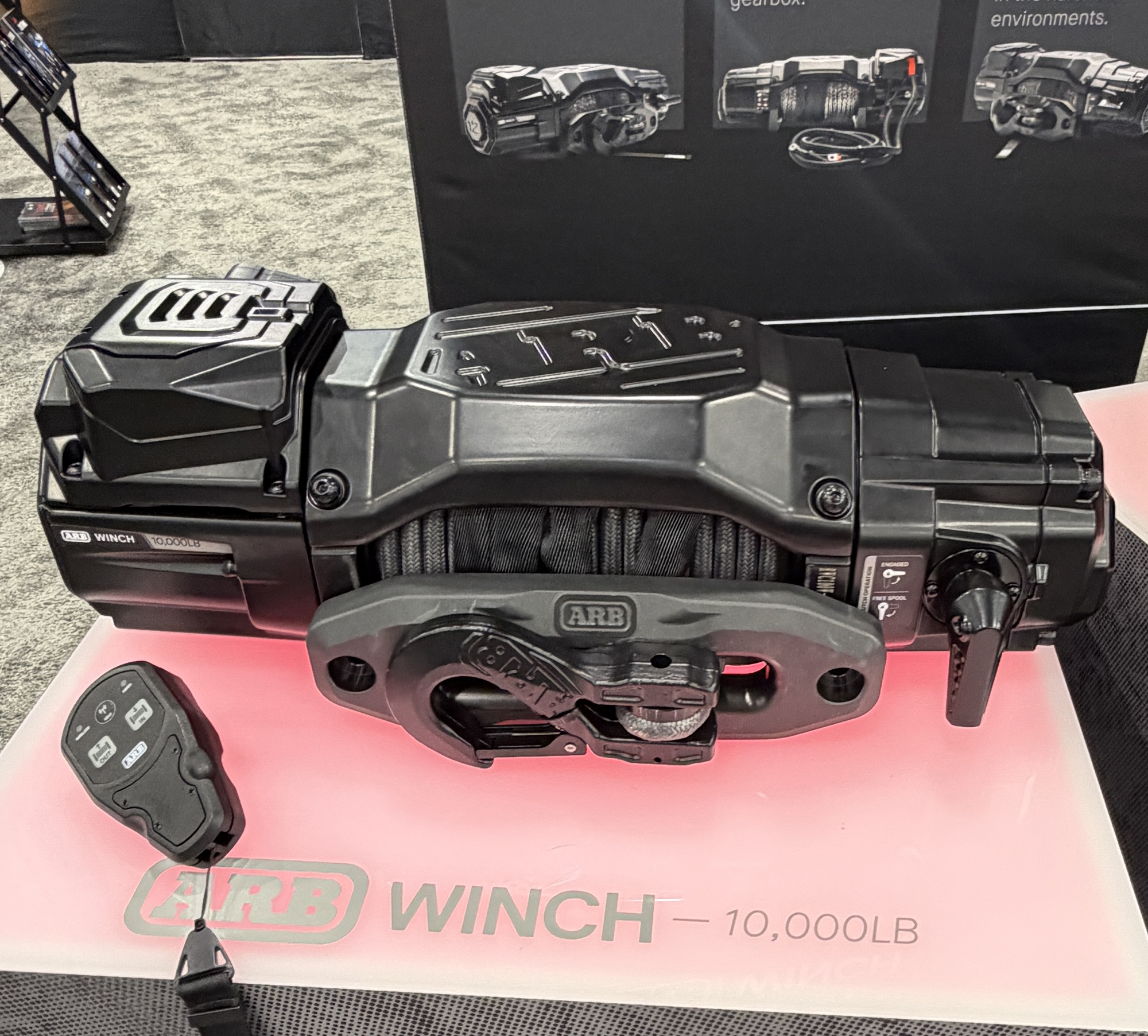
Two: ARB Enters the Winch Arena With a New 10K & 12K Line
While many vendors chose to display products at this year’s show that were revised or remanufactured, ARB decided to officially step into the North American winch market with a fully re-engineered version of the Bushranger 4×4 winch the company sells overseas.
These Bushranger models have been available in Australia for years, but ARB’s new winches are designed specifically for North America and, interestingly, won’t be offered in Australia at launch.
In its booth this year, ARB debuted 10,000 lb and 12,000 lb synthetic-line winch models, each built with a modern, integrated control box that tucks cleanly into today’s slim-profile bumpers. The result is a polished, OEM-plus look rather than the bulky traditional winch layout.
Despite being ARB’s first major winch release in North America, the specs show they’re aiming directly at the premium and/or overlanding market thanks to that 10K and 12K capacity, 4-stage hardened steel gearbox, IP68 waterproofing, synthetic rope, a wired/wireless remote, and hook with hawse fairlead.
Optional accessories include a silver fairlead and a forged thimble upgrade.
The new winches are expected to hit North America in March 2026.

Three: TYRI Lighting ‘Smuggle Bus’ 1973 Dodge B200 4×4 Van
You expect wild builds at SEMA, loaded from front to back with products. But every once in a while, one just stops you in your tracks.
For us this year, it was the Smuggle Bus, a weathered-but-rowdy 1973 Dodge B200 Tradesman 4×4 van parked in the TYRI Off-Road Lighting booth.
Now, we’ve been hearing about this build since the Detroit 4Fest show in early September, so we were really looking forward to the final product.
This thing was originally converted to four-wheel drive back in 1975 by Burbank 4×4, and the van spent years running between Southern California and Baja before landing in the hands of current owner Eric Ammerman, Director of Off-Road Lighting for TYRI.
Under the sunburned patina is some serious hardware: a 360ci V8, TorqueFlite 727 automatic transmission, NP205 transfer case, Dana 44 front and Dana 60 rear axles, leaf springs, and 35x12.50R17 Amp mud-terrain tires on forged Dirt Life beadlock wheels.
Additionally, a period-correct Warn 8274 winch, full spread of TYRI lighting (over 100,000 effective lumens), roof racks, rear gear storage and a fully outfitted interior all help turn this ting into a rolling overland time capsule.
Even better, the van didn’t just get trailered in for photos.
TYRI design engineer Nick Wimme and renowned vehicle fabricator Greg Henderson helped bring it to life after driving from Michigan to Idaho to pick it up, then back to Michigan for the vehicle work.
Then, as a fundraiser for SEMA Cares, Wimme drove it more than 7,000 miles round-trip to Vegas and back, while Henderson and a few others drove tiny 50cc mopeds. Standing silent in the TYRI booth, the van definitely looked like a vintage Baja smuggler, but it absolutely earned its spot as one of the coolest, most authentic rigs we saw all week.
Related Articles:
Annual SEMA Show Just One Face Of Organization's Industry Dedication

